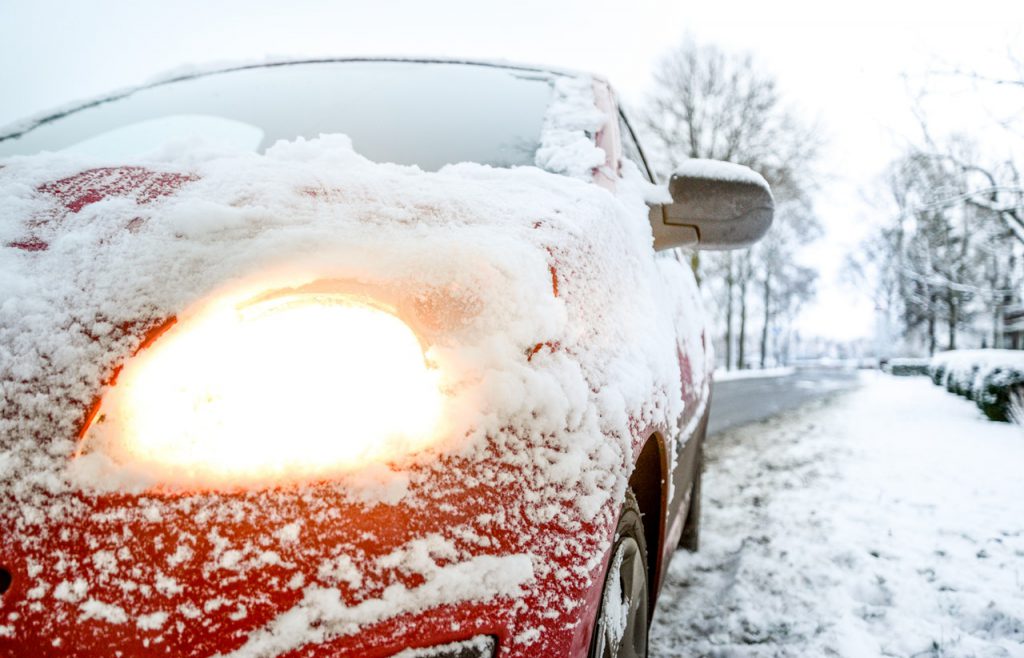If you are having a car or just driving a vehicle, you must understand the essential of the diesel oil to the engine. In order for it to work perfectly, drivers must know how to winterize diesel engine. It is the truth that not many car owners know the terms of winterizing diesel engines, as well as how to winterize diesel engine. So in this article, we will give you the 101 tutorial of how to perform this task.
Contents
Few Things to Note
Antifreeze
Before getting to know how to winterize diesel engine, we need to understand about each type of antifreeze. There are two options for car owners to use.
One is the common automotive antifreeze. Prestone is an example. This type of antifreeze is amazing for automobiles, yet it is not the best choice for gensets or marine diesel engines. Since the automotive-type antifreeze is toxic, it is recommended to use a non-toxic variety for the application. This also prevents harmful in cases there are storm drains or the water while using the boat.
Another one is the less-toxic antifreeze which is made from propylene glycol. An example for this type of antifreeze is West Marine, also known as premium “virgin” antifreeze. Along with normal nature, it has corrosion inhibitors with the purpose of protecting the cooling system and the engine.
Concentration
Along with acknowledging the antifreeze , we need to understand three levels of concentration: -50, -60 and -100 degree antifreezes. With the purpose of winterizing the engine, car owners should go for the highest concentration available, which is the -100. The reason for this is that there is a high chance your engine has some leftover residual water inside , and that dilutes the antifreeze you apply in. This might affect the results of freezing point.

Along with the concentration, “slush point” is another note for car owners. Slushing is, in fact, a normal term and does not harm your engine or car components. However, it is our recommendation to remove the impeller from the raw water pump and lubricate it, then put it back in the pump. We want to replace the cover to the pump housing and leave the cover screwed in place to prevent the impeller from sticking to the pump housing. This removal of impeller can be done until spring.
How to Winterize Diesel Engine
Before knowing about the step to winterizing diesel engine, you need to understand what it is. In order to get the concept easily, car owners need to acknowledge that winterizing diesel engine is a step-by-step process.
When the process is finished, car owners will have stabilized fuel, clean oil in your engine. Along with that, there will be a cooling system either drained or filled with antifreeze to be ready for spring commissioning. Not to mention, car owners will have inspected key car components that covered all left big reminder notes, openings and listed required repairs. So the next question is, how to winterize diesel engine, or winterizing diesel truck? Let’s jump right in!
Step 1: Stabilize the Fuel
While preparing the fleet for winter, the fuel is by far one of the most commonly overlooked elements. To be fair, car owners want to winterize the fuel first, especially when the equipment will be used the whole cold season. For that reason, the first thing we need to do is to stabilize the fuel.
Car owners need to check their fuel-water separator for water and sediment. Most drivers do not know that the water in the fuel system can decrease the performance of the engine, as well as damage car parts like injectors or fuel pumps. So in order to avoid these problems the next step is to clean the separator, replace the water-absorbing filters and drain other elements if needed. We want the tank to be around 95% filled with clean diesel in order to add a fuel stabilizer. If the tank has fuel and hydraulic oil, they can prevent condensation from forming during humidity and temperature changes.
According to Practical Sailor, the Star Tron Diesel Additive and Biobor JF are the recommended products. The last task of this step is to run the engine with the purpose of distributing the stabilizing additives around and throughout the fuel system.
Step 2: Change Oil
The next step is to change the oil of the engine as well as replace the oil filter. And yes, we must perform this task immediately instead of waiting until spring due to the harmness overtime. To be more precise, the dirty, old oil has acids and contaminants. They will damage and destroy the engine during the lay-up. So in order to maintain the engine’s health, we need clean oil. The same reason applies for the oil in the transmission too, so change both the oil if possible.
SEE MORE
- 10 Tips To Prolong The Lifespan Of Diesel Engines
- How To Remove Clear Coat From A Car: Fool-Proof Process
One more thing to keep in mind for drivers is to first run the engine up to operating temperature, as well as change the oil while it is warm. This trick will help drain all the gunk and contaminants away with the oil.
Step 3: Coat the Cylinders
Along with using oil, we can also spray some into the inlet manifold in order to coat the cylinders. This is an essential step that car owners might not want to forget. After applying the oil, we need to crank the engine over a few times without starting it. The purpose of this action is to coat the walls of the cylinders thoroughly with oil.
Step 4: Winterize the Cooling System
Freshwater-cooled Engines
After all these steps, we reach the winterize cooling system task. The thing we need to do first is to replace the coolant in the freshwater side of the system. This task is crucial to perform since the antifreeze additives to remove and fight corrosion. The antifreeze will not wear out, however, the additives do. So if your car has an antifreeze that needs to be diluted before use, you need to do that beforehand. Reach for the instructions if needed before adding it to the freshwater cooling system of your vehicle.
Raw Water Cooling System
Car owners can choose between two options: The first option is to fill the cooling system with antifreeze. This is our favorite choice since it is better for the engine. It also reduces the chance of freeze damage. In order to use antifreeze to winterize the engine, there are some preparations that need to be done. First, drivers must have a five-gallon bucket. Second, we also need a related plumbing, around two gallons or more is the suitable amount. Last but not least, enough antifreeze for your engine is the must. You can check the amount from the manual or ask the mechanics. In cases when your engine requires a lot of antifreeze, you need another person to help add antifreeze to the bucket.

With all the preparations finished, time to add antifreeze through the engine.
First of all, car owners fill a five-gallon bucket with non-toxic antifreeze. Leave it undiluted for the correct amount. Always have additional antifreeze handy if this is your first winterize or if you know your boat takes more than the prepared amount. Car owners can always use the leftovers in the plumbing systems of the boat.
Second of all, if the boat is in the water, remember to close the intake seacock. We need to remove the raw water intake hose from the seacock and insert the end into the bucket filled with antifreeze. This task might be hard to perform sometimes due to the fact that hoses and hose clamps might be frozen in place.
Third of all, car owners start the engine as well as run it at idle until antifreeze discharges from the exhaust outlet. This step might take around more than 30 seconds.
Last of all, we need to secure the intake hose back on the seacock.
The other alternative is to drain the whole system. This step needs to be done with care to not leave standing water in any low spots. Not to mention, we need to thoroughly drain the engine since small pockets of water can crack crucial engine components. In order to drain, it is our recommendation to see the manual of the owners in order to spot the location of all petcocks. After opening them, if the water does not drain freely, they might be clogged with debris and rust. Car owners then need to remove the petcock as well as free the opening. The coat hanger is the right tool to do this job. Another thing to remember is to drain the seacok body, the sea strainers along with a water lift muffler.
Step 5: Check the Exhaust System and Hoses
Car owners then break the exhaust loose from the exhaust manifold or water lift muffler in order to check if there is any corrosion or carbon buildup. We also need to take the raw water injection hose off the injection. The reason why we need to do this is that there might be scale or debris blocking the way.
Along with that, we need to check all hoses for evidence of bulging, softness or cracking. Drivers must be very focused on the hot side of the exhaust as well as cooling systems. The hose clamps also needed to be examined in order to be sure they are tight and clean.
Step 6: Seal Engine Openings
Last but certainly not least, we need to seal all of the openings in order to go into the engine. The aim for this is to prevent the damp air from flowing inside. The right way to seal is making caps out of plastic containers and taping it. By doing this, car owners can cover the air inlet, transmission and crankcase exhaust outlets and breathers. The tip for this is to leave a note for yourself of all sealed openings so you can remember which openings to uncap in the spring.



